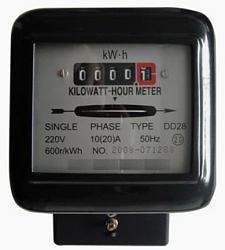There is something about that green film and the electric field that is generated that produce the moving image.
I remember those ads.


Thanks DIYSwede, magnetic viewing screen, now if I could only think of something useful.
Now this one claims "Test Cracks on Steel Surfaces" now what/how?
That might be useful.
Marv is correct. Copper tube being so easy to get is seen probably 99% of the time, and what we used demonstrating to STEM classes. Though bar would make the field appear broader, more visible.
Glad I wasn't called to make it. I machine copper now and then, making spotweld electrodes and fixture plates. Politely, many grades are quite a bear to machine.
Sincerely,
Toolmaker51
...we'll learn more by wandering than searching...
Eddy currents can be either beneficial or detrimental.
All you need to generate eddy currents is a CHANGING magnetic field and a conductor in that field. You can get a changing field by relative movement between a magnet and a conductor, but also by passing an AC through through an inductor to create the field.
On the detrimental side are the eddy currents generated in transformer cores and electric motors. The reduction of eddy currents is the reason that transformers and motors have laminated cores. Each lamination is covered with a insulating coating, this restricts the eddy currents to lots of small currents in each lamination rather than the large currents which you would get with solid steel cores. Without laminated cores transformers and motors etc. would be inefficient and the cores would heat up to excess. Ferrite material is often used in place of laminations because it is magnetic but non-conducting, so preventing eddy currents from circulating.
On the beneficial side there are countless applications. One example is/was in electric utilities power meters which use an aluminium disc which rotates with a velocity proportional to the power being used. Voltage and current coils multiply to generate eddy currents in the disc proportional to the power being used and those currents create a magnetic field to oppose that from the coils and so the disc is pushed around. To prevent the disc spinning at at uncontrolled rate there is a magnet brake to apply a load torque. An eddy current motor in effect.

Click for full size.
As has been mentioned, some brakes and dampers can be made using eddy currents.
This shows a typical brake (often called a retarder) as used on trucks and other vehicles.
Two ventilated cast iron discs and an axle close a magnetic circuit generated by coils (the white pieces) that are powered by a DC to produce a steady magnetic field of strength proportional to the current. As vehicle brakes they have the advantage of no wearing parts, but they are used in conjunction with friction brakes because the eddy current brakes produce no holding torque at rest. There are countless other applications for devices that use eddy currents. Brakes almost identical to these retarders are also used in dynamometers for measuring power, they have the advantage that they are so easy to control. The braking torque is controlled by changing the DC through the coils.

Last edited by tonyfoale; Oct 11, 2023 at 03:57 AM.
hemmjo (Oct 11, 2023)
There are currently 2 users browsing this thread. (0 members and 2 guests)
Bookmarks